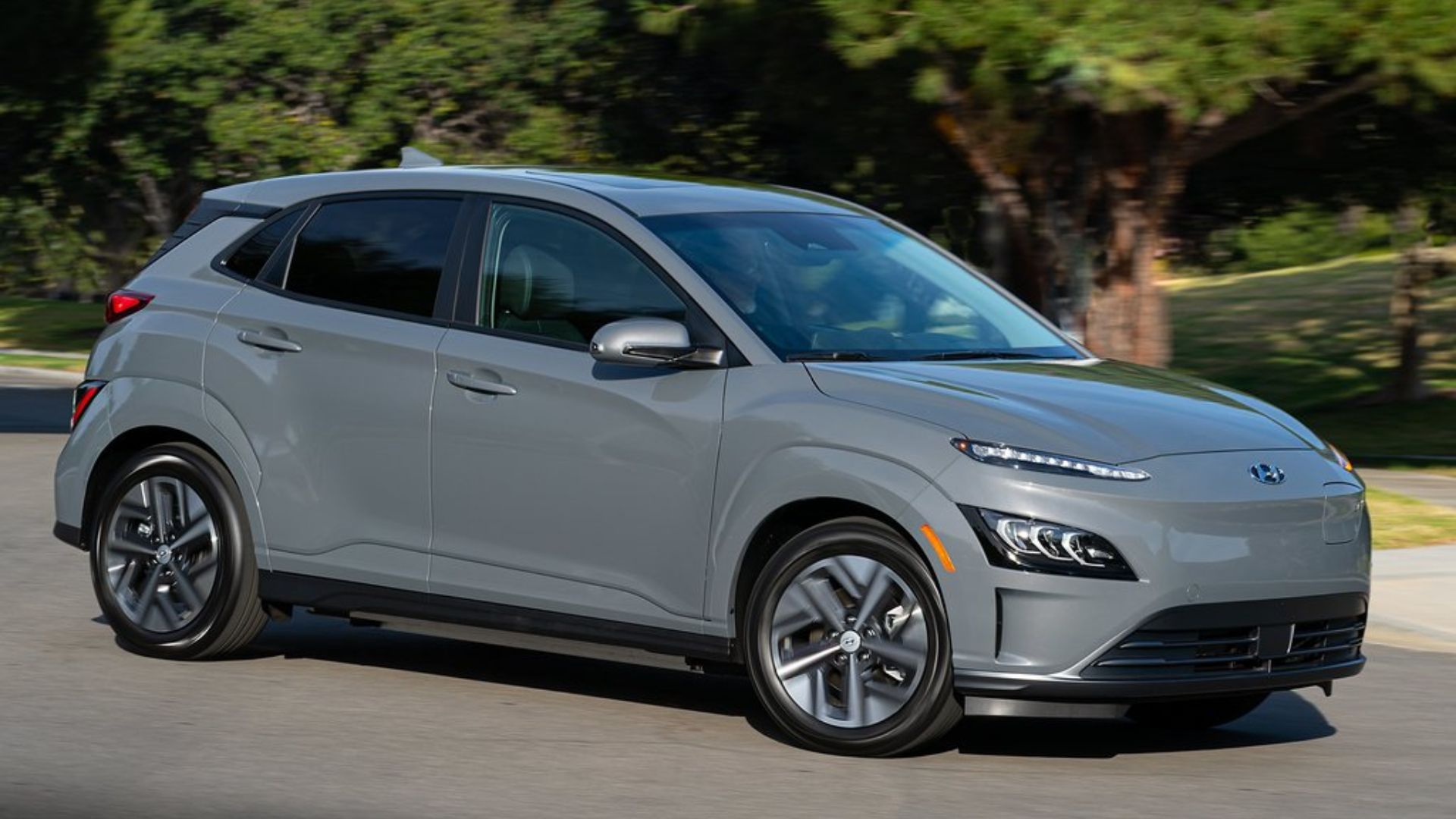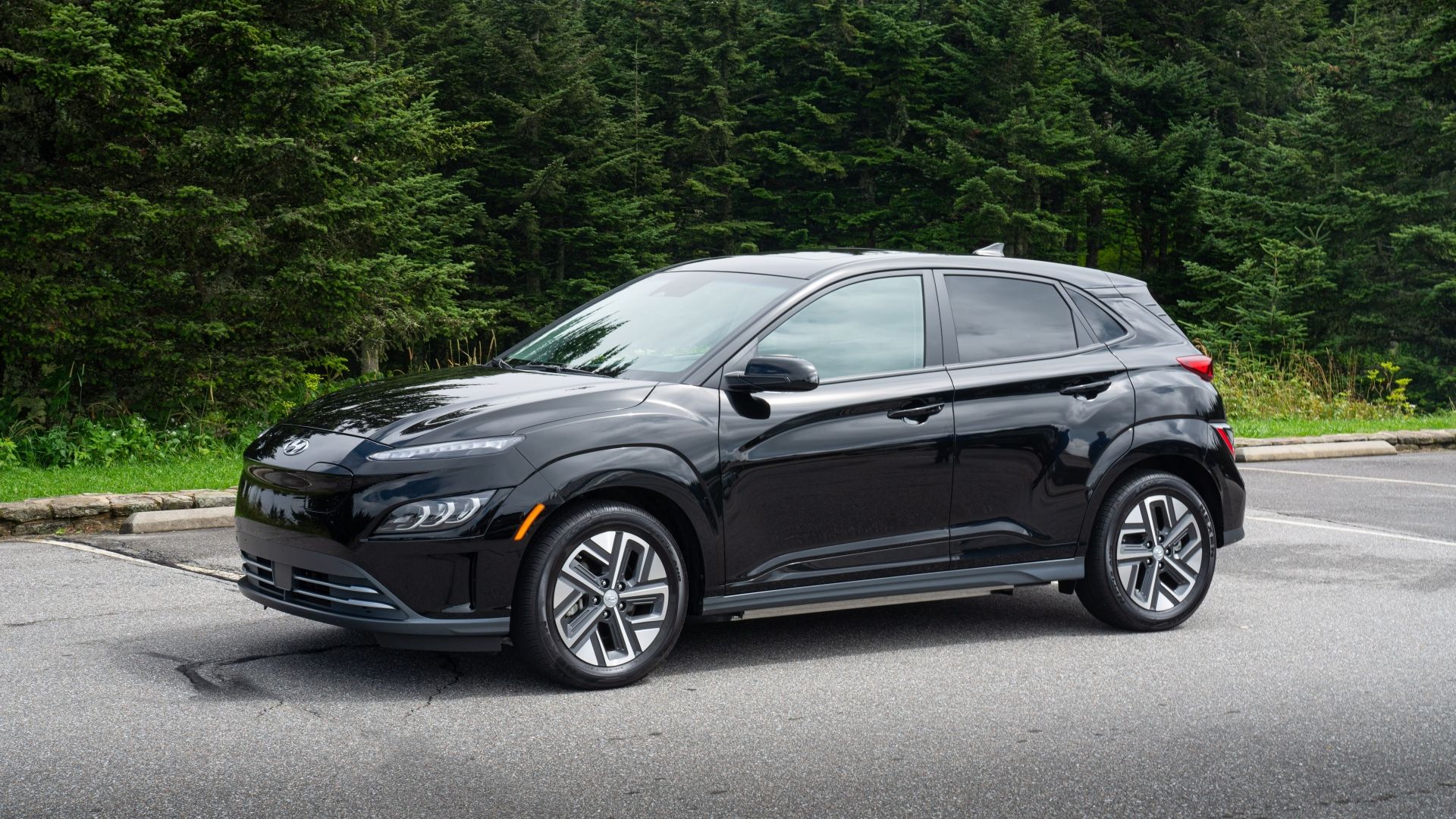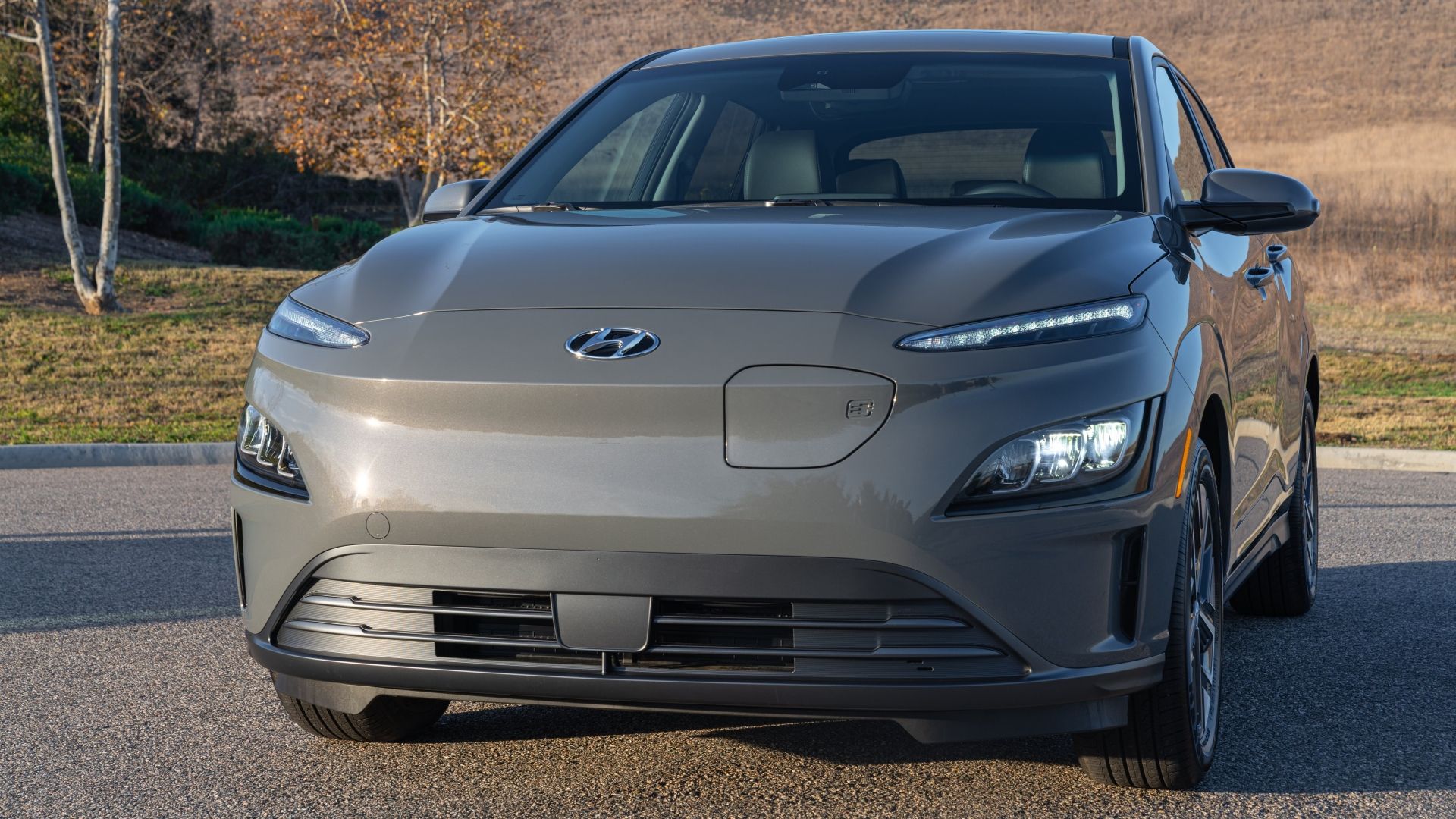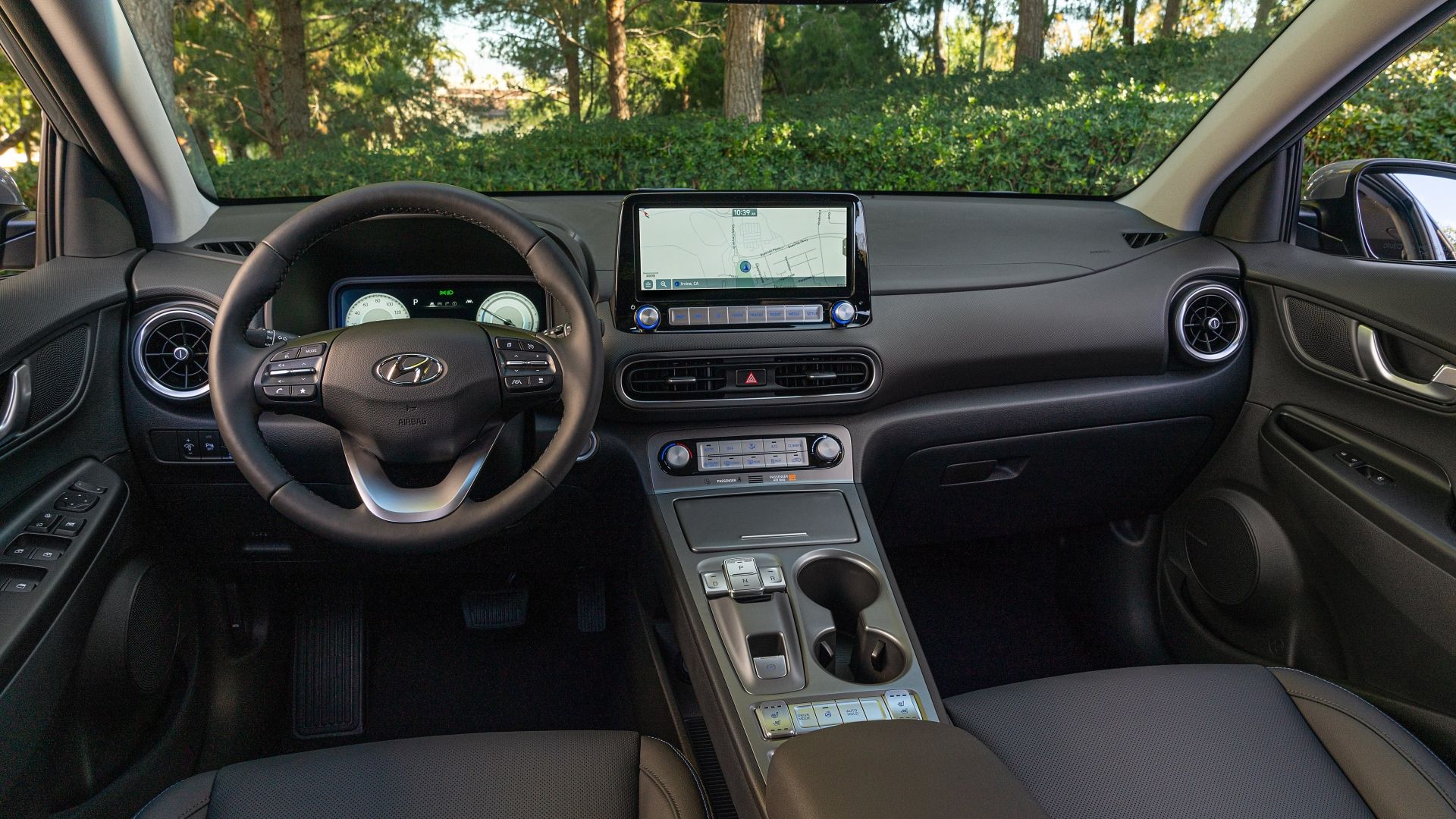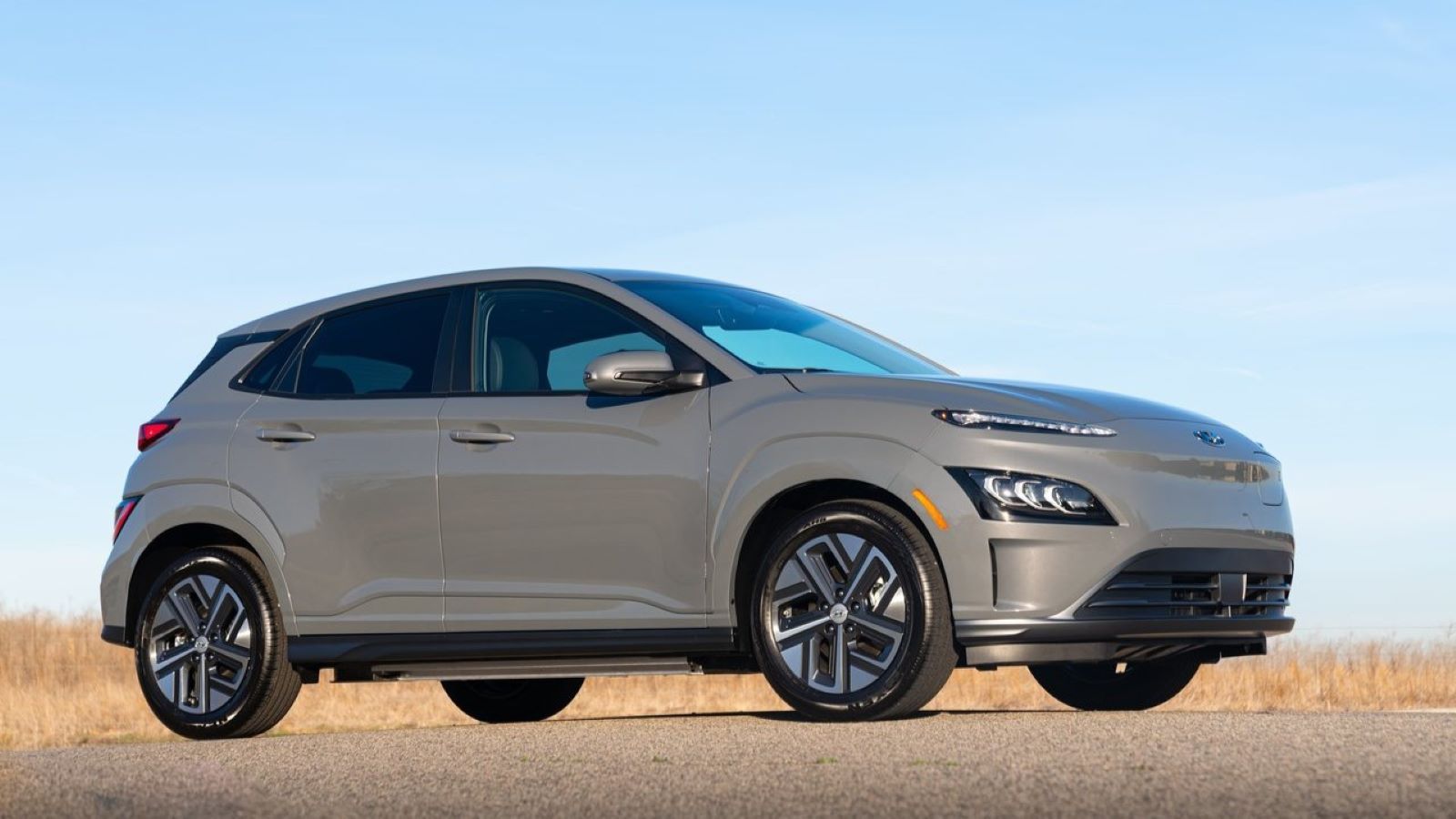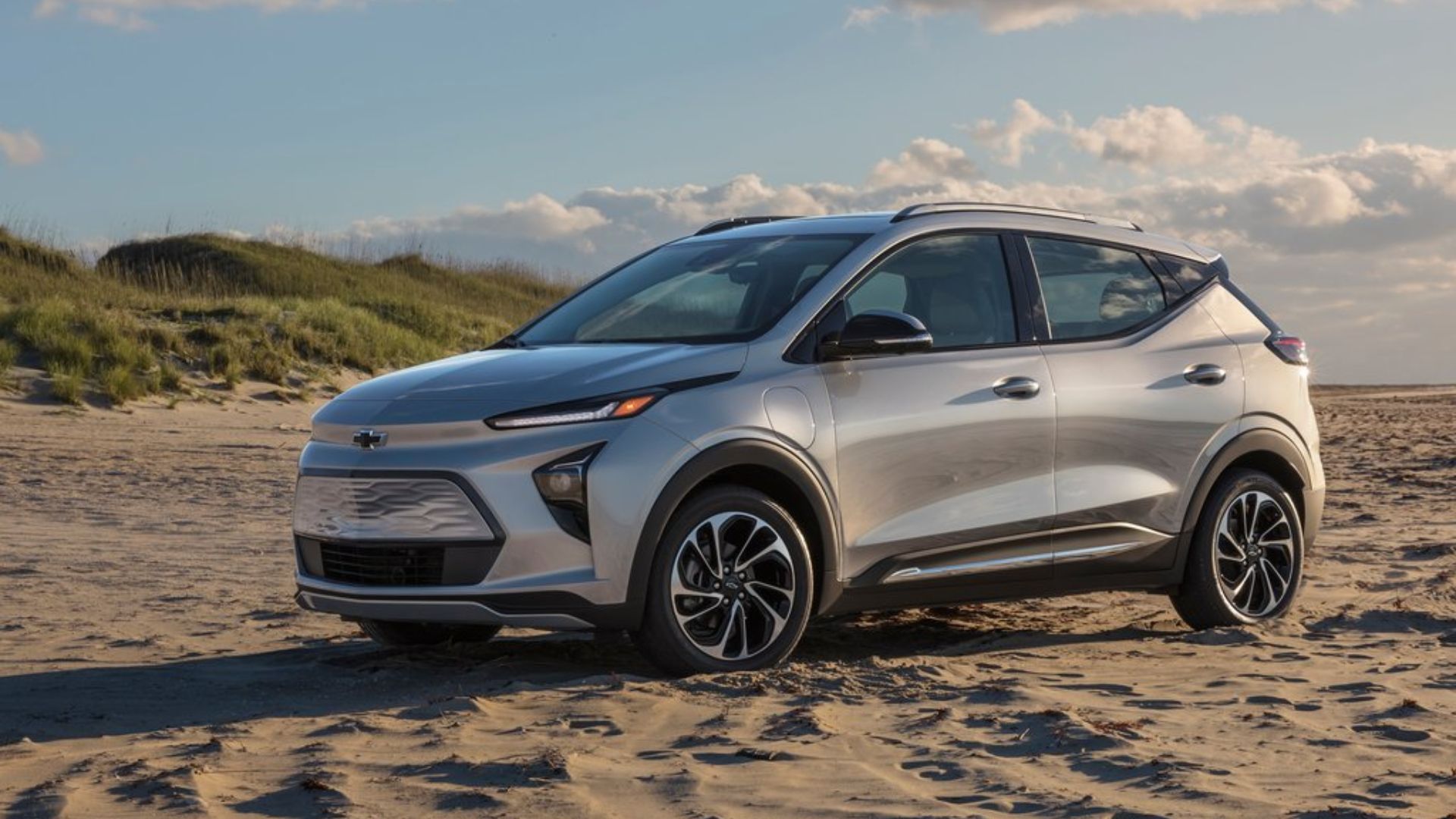The Hyundai Kona is a top choice for buyers in the subcompact crossover segment with its fun-to-drive personality and value prospect given its long list of standard features. Additionally, the Kona is offered in its supremely athletic “N” guise for those who want, effectively, a high-riding hot hatchback. And those looking to make the switch to all-electric power, or find another model in the segment, needn’t stray from the Kona nameplate with the Kona Electric forging into its fifth year of production.
Hyundai has started to tease the second-generation Kona Electric that will debut for the 2024 model year, and it’s quite a looker. But those who don’t want to wait, or perhaps save some dough, the 2023 Kona Electric is still an appealing option. And though the model year updates are relatively minor, they do make the subcompact EV an even more enticing proposition.
The Hyundai Kona is a top choice for buyers in the subcompact crossover segment with its fun-to-drive personality and value prospect given its long list of standard features. Additionally, the Kona is offered in its supremely athletic “N” guise for those who want, effectively, a high-riding hot hatchback. And those looking to make the switch to all-electric power, or find another model in the segment, needn’t stray from the Kona nameplate with the Kona Electric forging into its fifth year of production.
Hyundai has started to tease the second-generation Kona Electric that will debut for the 2024 model year, and it’s quite a looker. But for those who don’t want to wait, or perhaps save some dough, the 2023 Kona Electric is still an appealing option. And though the model year updates are relatively minor, they do make the subcompact EV an even more enticing proposition.

2023 Hyundai Kona Electric
- Engine:
- Single Electric Motor
- Power Output
- 201 HP
- Torque
- 291 LB-FT
- Range
- 258 Miles
- Transmission
- 1-Speed
- Driveline
- FWD
- MSRP
- $35,885
- Agreeable Pricing
- Respectable Range Among Closest Rivals
- Generous Features List
- Limited Space For Passengers And Cargo
- Top Models Don't Have Wireless Apple/Android Connectivity
- No AWD Option
2023 Hyundai Kona Electric Performance And Capability
The 2023 Kona Electric is offered with one powertrain, a single electric motor with a total output of 201 horsepower and 291 pound-feet of torque. Its power is sent exclusively to the front wheels as no all-wheel drive option is offered. The Kona Electric will scoot from 0-60 mph in 6.4 seconds, a few ticks quicker than the standard combustion model with a 147-horsepower 2.0-liter four-cylinder engine. The top speed of the Kona Electric is electronically limited to 104 mph.
With near instantaneous acceleration, the Kona Electric feels plenty sprightly around town, and while it doesn’t pack a huge amount of passing power, it’s more than enough for the daily commute. With an independent rear suspension, accurate steering, and poise in the corners, there is some fun to be had in the Kona Electric, much likes its ICE counterpart. In TopSpeed’s review of the 2022 Kona Electric, we called the little Hyundai “sneaky quick” with its energetic demeanor. The Hyundai shows that a small EV doesn’t have to equate to dulls-ville behind the wheel. For more mundane driving situations, the Kona Electric delivers a composed and comfortable ride.
The Kona’s 64kWh battery can be re-juiced with a charging input of up to 100kW. With a 7.2kW onboard charger, the Kona Electric can be fully charged from 10 percent in a little over nine hours with Level II charging. Under ideal conditions and with standard DC fast charging, it can go from 10 percent to 80 percent in about 47 minutes. To assist range, the Kona is fitted with paddle shifters allowing drivers to adjust regenerative braking settings. Also offered is a one-pedal driving mode. The 2023 Kona Electric is rated for up to 258 miles of driving range, which is competitive among its closest rivals.
Exterior Design
View the Kona Electric from certain angles and it’s hard to differentiate the model from its internal combustion stablemate. Outside of the obviously missing tailpipe, the Kona Electric only really stands apart from the ICE Kona with its lack of a front grille, which is replaced by the charging port on the driver’s side of the front fascia, and its unique 17-inch wheels.
This isn’t necessarily a criticism as the Kona Electric is attractive overall. It’s handsome enough to appeal to mass audiences while having enough character to still be attractive. Those wanting a more eye-catching design should consider waiting for the 2024 Kona Electric with the completely revamped and futuristic front end.
Length | 165.6 in. |
|---|---|
Width | 70.9 in. |
Height | 61.2 in. |
Wheelbase | 102.4 in. |
Ground Clearance | 6.2 in. |
Curb Weight | 3,715 lbs. |
Exterior Colors |
|---|
Pulse Red |
Galactic Gray |
Blue Wave |
Lunar White |
Cactus Fern |
Interior Quality And Technology
The Kona Electric is among the smallest EVs on the market, but it is filled with a generous list of standard features with quality materials. Base models are fitted with an eight-inch touchscreen with the mid-range and top-spec Limited versions sporting a 10.25-inch touchscreen with navigation. A digital, 10.25-inch display is standard in SEL and Limited trims.
Android Auto and Apple CarPlay connectivity are standard, but they require a wired connection in the two upper trims (the base SE has wireless connectivity). All models are fitted with three USB ports, and wireless charging is standard in SEL and Limited models.
Cloth seats are standard with the Limited trim sporting leather seats. Heated front seats and an eight-way adjustable power driver’s seat with lumbar support are fitted to all models with the Limited adding ventilated seats for front passengers. Limited models also add a Harman Kardon, eight-speaker sound system (a six-speaker setup is standard).
With its small dimensions, the Kona Electric certainly isn’t the most pragmatic choice for families or those who often need to move a lot of stuff. Front passengers won’t be left wanting for too much more space if they are of average height, but adults in the rear will feel the pinch with just 33.4 inches of legroom. The cargo area behind the rear seats will accommodate up to 19.4 cubic feet of stuff, which is enough for a grocery haul, but some may require more practicality. And despite having a battery pack, the Kona and Kona Electric offer identical storage behind the rear seats.
Seating Capacity | 5 |
|---|---|
Headroom (front) | 39.6 in. |
Headroom (second row) | 37.7 in. |
Legroom (front) | 41.5 in. |
Legroom (second row) | 33.4 in. |
Shoulder room (front) | 55.5 in. |
Shoulder room (second row) | 54.5 in. |
Cargo Room | 19.2 cu.-ft. |
2023 Hyundai Kona Electric Pricing And Availability
The 2023 Kona Electric is available now with prices starting at $34,885, with destination, for the base SE model and rising to $42,885 for the top-spec Limited trim. It’s vital to note the Kona Electric is only offered in 26 states. To check if your area is included, visit Hyundai’s website.
Trim | Price |
|---|---|
SE | $34,885 |
SEL | $38,635 |
Limited | $42,885 |
Safety
The Kona Electric comes with a suite of standard safety features and driver’s aids including blind-spot collision avoidance assist, rear cross-traffic collision avoidance assist, automatic forward emergency braking with pedestrian detection, lane keep and lane follow assists, Hyundai’s Safe Exit warning, and Driver Attention warning.
Upgrading to the top-spec Limited models adds a parking distance warning, cyclist detection for the automatic emergency braking system, and Hyundai’s smart cruise control system. The NHTSA has not rated the Hyundai Kona Electric, but the 2022 internal combustion model scored five out of five starts for its overall safety rating.
Main Competition
The Kona Electric has a somewhat unique standing in the all-electric segment in terms of its size and price. As such, it most closely competes with other EVs like the Chevrolet Bolt EUV, Volkswagen ID.4, and Nissan Leaf, and there are still many points of separation between its competition.
Firstly, the Kona Electric’s range is competitive. Its 258-mile range on a full charge is a single mile more than the Bolt EUV, and the mid-range ID.4 offers 255 miles as standard with a configuration that will return up to 275 miles. Those figures all dwarf those of the Leaf, which can only manage about 150 miles on a single charge. The Kona Electric, ID.4, and Bolt EUV all have right at 200 horsepower and charge times are similar, so practicality and price are major factors.
The Hyundai is smaller than its counterparts. The Bolt EUV, for instance, offers six more inches of rear legroom and more than 10-cubic feet of added storage space behind the front seats, though the Kona does edge it for cargo space behind the rear row. The ID.4 offers more cargo space than both models and slightly less rear passenger space than the Bolt EUV.
With a starting price of about $35,000 with destination, the Kona Electric commands a price premium of about $6,000 over the Bolt EUV. Meanwhile, a mid-range ID.4 with its 255-mile range and all-wheel drive commands about $10,000 more than the Hyundai.
The Ford Mustang Mach-E is another option to consider as it is relatively close in size to the Hyundai, but the Ford starts at nearly $48,000 for a base model. However, it does offer more power and driving range for the added dollars. Those moving up to that price range should also consider the Hyundai Ioniq 5 or Kia EV6, both of which are also rich with amenities and offer more power and driving range than the Kona Electric.

